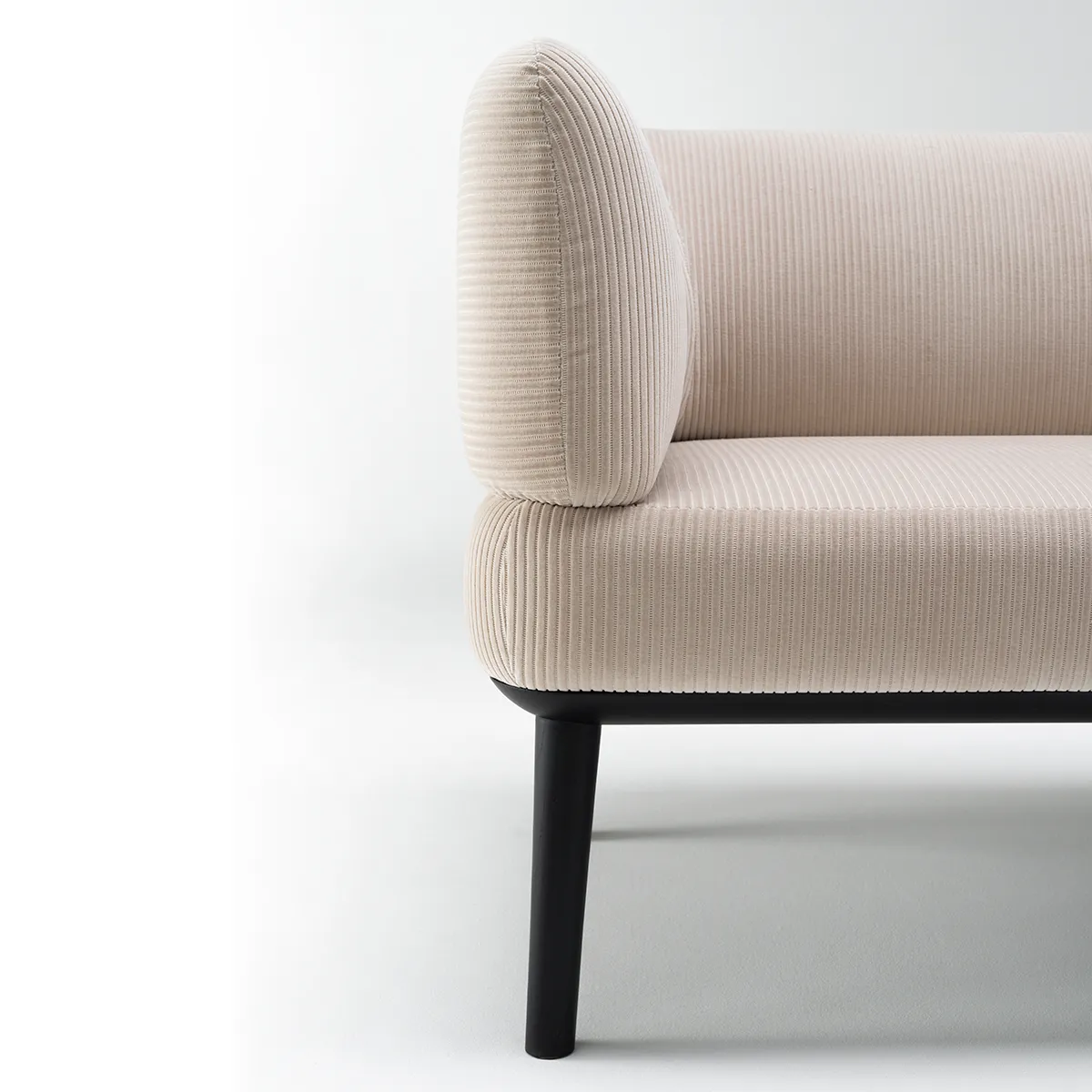Sou by Teruhiro Yanagihara
Form and function in layer on layer.
Take a piece of furniture apart down to its most basic components, and put it back together step by step. Teruhiro Yanagihara’s sofa Sou, designed for Offecct, is constructed in different layers to make it possible to freely create different shapes and functions for public environments.
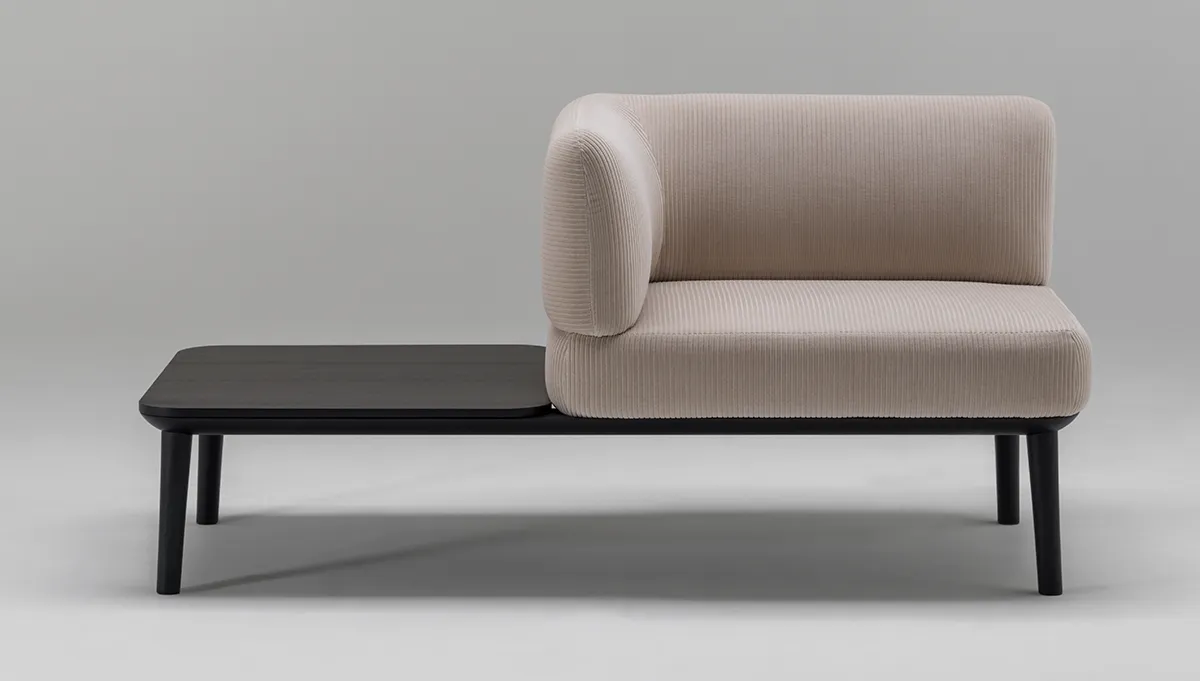
Teruhiro Yanagihara has a background in spatial design and architecture and always thinks about rooms and surfaces, rather than individual objects. As in his previous collection for Offecct, Osaka, the new Sou sofa is based on a spatial perspective where the furniture works as a flexible jigsaw puzzle. “My idea was to start with the sofa’s most basic parts and let the different shapes and functions overlap in layers. The seat is a little higher, so it goes particularly well in restaurants and waiting rooms, for example,” he says.
The image that Teruhiro Yanagihara had in mind during the process was a mille-feuille, a French pastry of many layers which can be varied in different ways. The name ‘Sou’ comes from the Japanese ‘chisou’ which means ‘stratum’, with the prefix ‘chi’ (base) and the suffix ‘sou’ (layer). “It’s about how the sofa is designed, but also the fact that it can have different uses and expressions depending on how you choose to combine the different layers. Since the seat and backrest are separated, you can choose different colours of fabric or different finishes on the table part, for instance” Teruhiro Yanagihara explains.
He also emphasizes the similarity between Japanese and Scandinavian design tradition when it comes to reducing rather than adding to the product. Sou, with its simple shape, is given a timeless and easy-to-place expression, while also being a sustainable design choice with lower consumption of resources and materials.

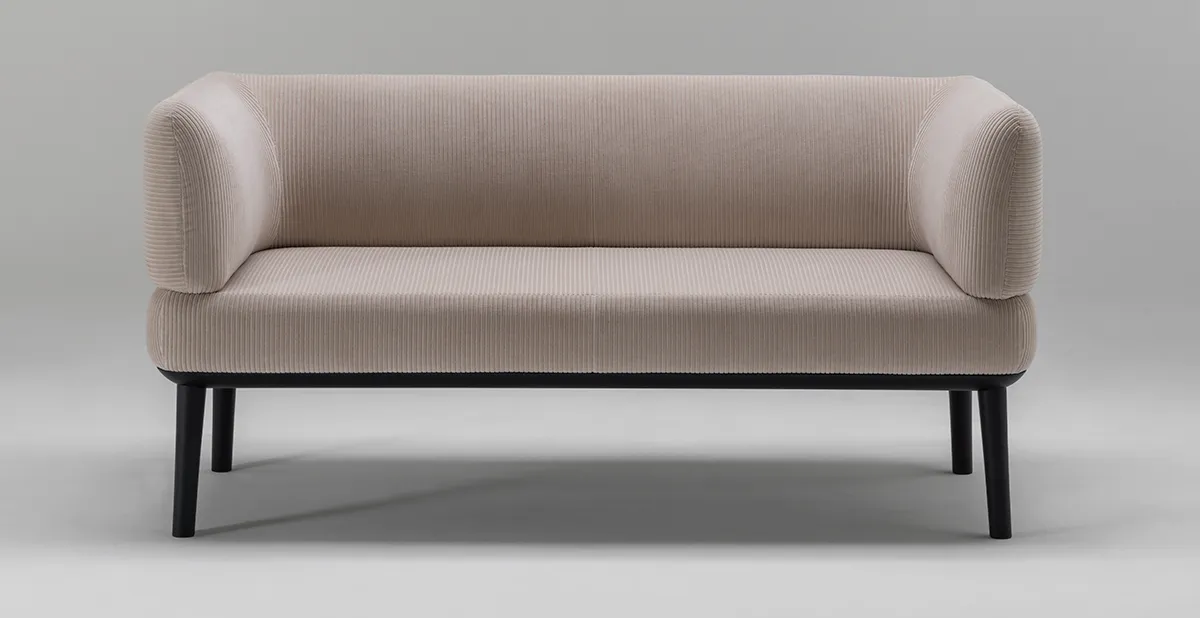
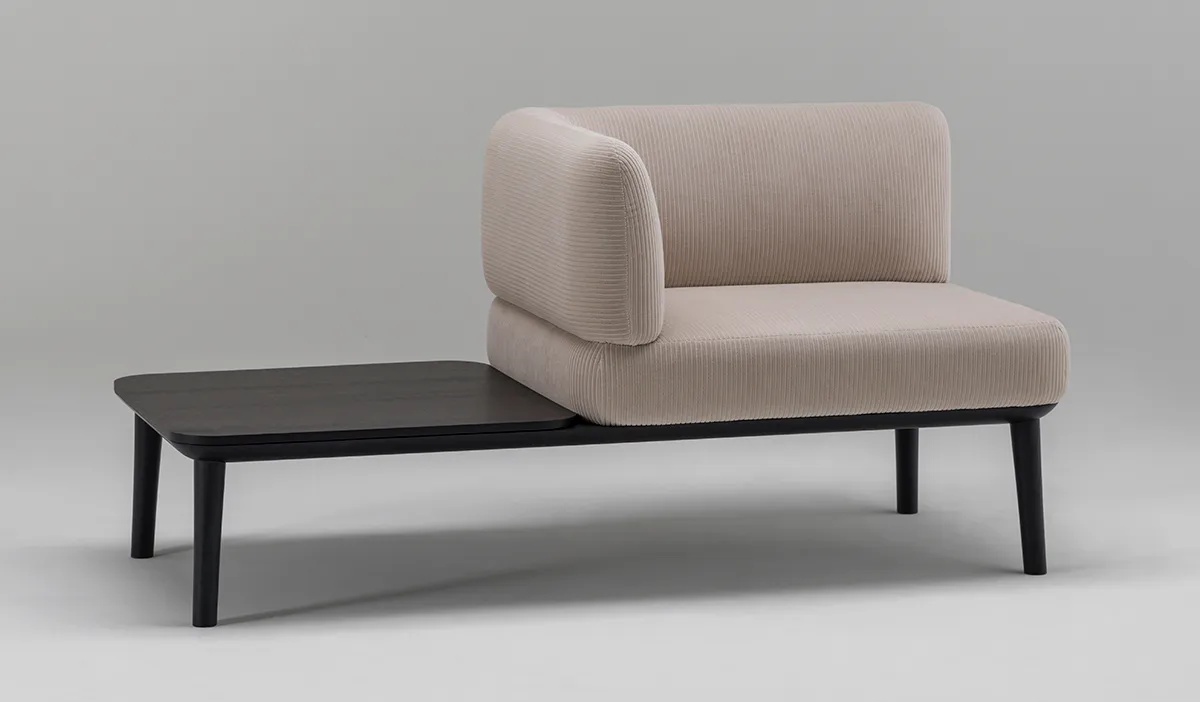
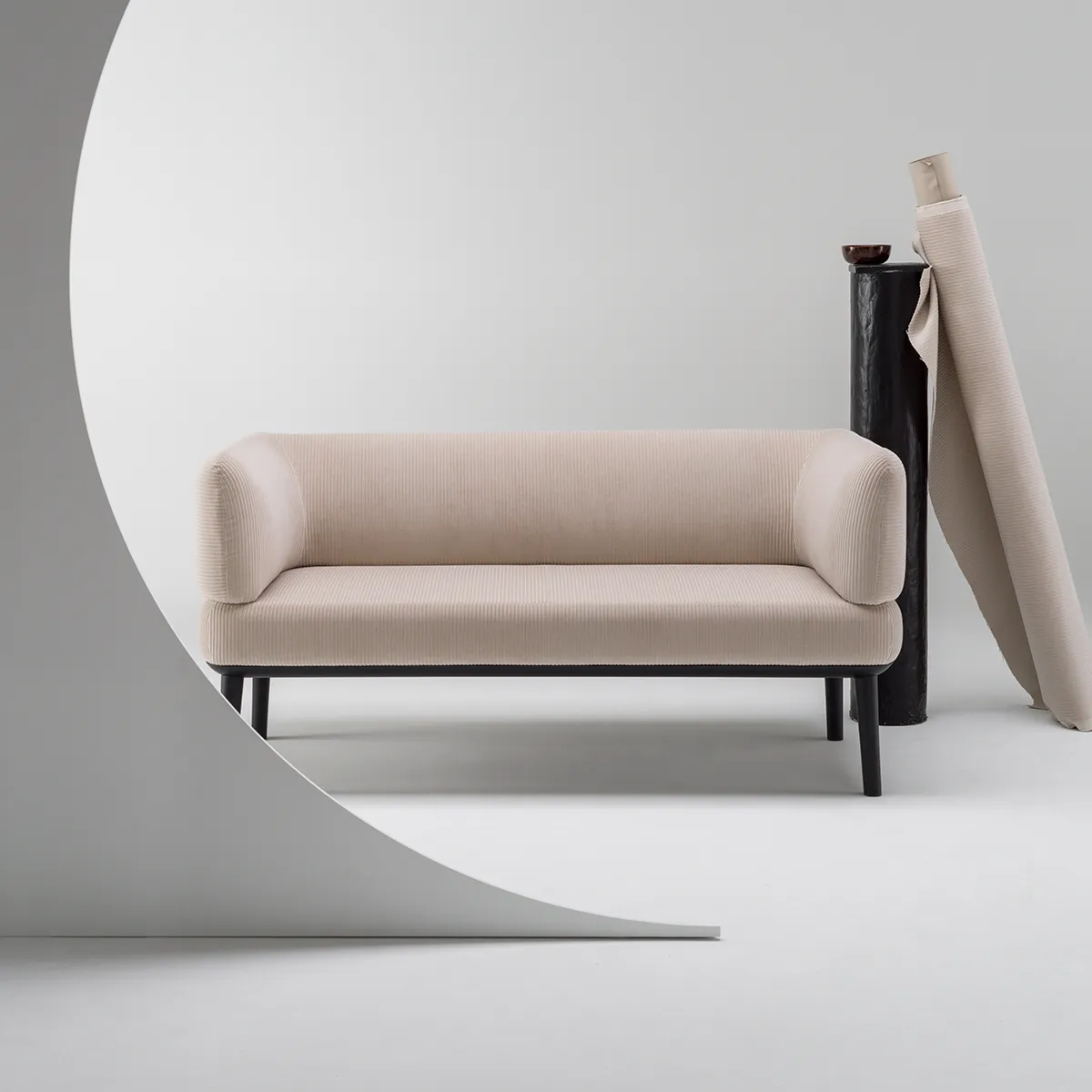
Photo: Björn Ceder
 Teruhiro Yanagihara
Teruhiro Yanagihara
Teruhiro Yanagihara works with domestic and international clients alike and likes to cross boundaries and cultures to create encounters between design, industry and craftsmanship.
Teruhiro Yanagihara Founder, Designer, Creative director of Teruhiro Yanagihara Studio
He was born in 1976, in Japan, and established his own company in 2002 to develop his own. He established 2nd studio in Arles, France in 2021.
His projects cross boundaries and cultures to form encounters between contemporary design, industries and Japanese crafts. He launched a new brand “Lichen”, which focus on taste, smell, and hearing. His past projects:1616/arita japan (Japan), 2016/ (Japan), Kimura glass (Japan), OFFECCT(Sweden), Kvadrat (Denmark), Skagerak (Denmark), THREE (Japan), FIVEISM x THREE(Japan), Mame Kurogouchi (Japan), etc.Permanent collection: Centre national des arts plastiques Paris (France), StedelijkMuseum Amsterdam (The Netherlands), etc. Jury member of GDA (Good Design Award Japan) 2020 and KOKUYO Design Award since 2021.
![]()
More designs from Offecct:

Circulus Sofa by Mario Ferrarini for Offecct – Red Dot Award winner
With a focus on sustainability, durable materials were used for the Offecct Circulus modular sofa …
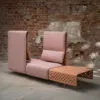
The new Circulus sofa from Offecct is a never-ending sofa, challenging the concept of sustainable public seating
A never-ending sofa for an endless seating experience that challenges the concept of sustainable public …

Offecct presents Vertigo Tables by Claesson Koivisto Rune @ 3daysofdesign
Vertigo installation by Danish design studio Krøyer-Sætter-Lassen: 12–14 June, Flatlist Eyewear, Kronprinsensgade 6B (courtyard) Design …
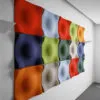
Offeccts Swell – acoustic panel designed by Teppo Asikainen from Snowcrash, celebrates 20 years
In the early 2000s, Teppo Asikainen was one of four Finnish designers who started the …

Pauline Deltour Sofa Collection Debuts at Offecct
Pauline Deltour’s stylized and tailored armchair Pauline, designed for Offect, is now joined by a …
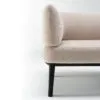
Sou Seating design by Teruhiro Yanagihara – Offecct
Sou by Teruhiro Yanagihara Form and function in layer on layer. Take a piece of …
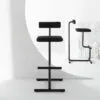
Nomole bar stool by Ronja Reuber – Offecct
Stockholm Design Week: We are launching a new bar stool, Nomole, designed by the young …

Pauline Armchair & Thelma by Pauline Deltour – Offecct
Exquisite lines and sophisticated playfulness. Pauline Deltour’s armchair Pauline and sound absorber Thelma, designed for Offecct …

A tribute to the craft – The Falabella stool by Lucy Kurrein – Offecct
A brand new stool from Offecct, Falabella is a tribute to the craftsmanship and love …

The life cycle continues with the Phoenix table, Design with a story by Luca Nichetto – Offecct
Receiving the 2017 ‘Form Awards for the Sustainability Project of the Year’, the Phoenix chair …

The Jasmine acoustic panel by Layla Mehdi Pour for Offecct
New collaboration behind playful acoustic panel Offecct offers a wide range of sound absorbing wall …

New opportunities as Font sofa system grows by Matti Klenell – Offecct
Font was born out of a concrete need for a visually simple sofa that is …

Offecct makes Lucy even more flexible, new module & digital configurator
Offecct makes the sofa system Lucy even more flexible. New module and digital configurator provide …

Soundsticks® wins Green Good Design Award – Offecct
Offecct’s sound absorbing room divider Soundsticks®, designed by Andrea Ruggiero, has been named a winner …

Waka, a seating furniture to drift away on by David Trubridge – Offecct
In his second collaboration with Offecct, David Trubridge has now created an inviting, open piece …

Shift Wood by Daniel Debiasi & Federico Sandri – Offecct
“The originality of the armchair is not only its ability to completely change the atmosphere …
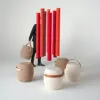
Carry On Upgrade by Mattias Stenberg – Offecct
Carry On, by Mattias Stenberg. Leather handle. Offecct’s iconic Carry On product is now available …

Spiegel Panel by Verner Panton – Offecct
New life for a design pioneer 50 years ago, Danish architect and designer Verner Panton …

Osaka by Teruhiro Yanagihara – Offecct
A landscape of furniture, inspired by Japanese stone gardens The simplest forms and materials, reflecting …

Maki by Jin Kuramoto – Offecct
A solitary and social icon, based on minimalism and diversity. A strong and iconic shape …

Staffan Holm lets craftsmanship shine at Offecct’s stand
Offecct’s stand for Stockholm Furniture & Light Fair 2020 has been created by Staffan Holm, …

Phoenix, a sustainable story by Luca Nichetto for Offecct
“It was a long process, testing a variety of materials and production methods to live …

Babled easy chair by Emmanuel Babled for Offecct
Sometimes you get the chance to sit in a work of art It is not …
Young by Michael Young – Offecct
Sofa and easy chair for urban spaces. When space is scarce there is no room …
Experimental design by guest designer David Trubridge. Waka, seating furniture to drift away on
Waka is designed by David Trubridge who, in his second collaboration with Offecct, has created …

Young by Michael Young – Offecct
Sofa and easy chair for urban spaces. When space is scarce there is no room …

Grandfield by Christophe Pillet – Offecct
A sofa system that doesn’t need to be categorised. Equally accomplished in expression and functionality, …

Font by Matti Klenell – Offecct
A modern sofa system with historic roots. Font by Swedish designer Matti Klenell is a …

Soundsticks by Andrea Ruggiero – Offecct
Achieving zero waste with 100% design. In 2017, Italian/Hungarian industrial designer Andrea Ruggiero was invited …
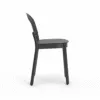
Chapeau by TAF Studio – Offecct
A Scandinavian café chair makes an entrance Following extensive remodelling, Nationalmuseum in Stockholm is once …

Offecct @ Stockholm Furniture Fair 2019
Stockholm Furniture Fair – 5-9 February, 2019 – stand B03:11 Offecct AB | Box …

Design awards 2018 – Offecct
During the year 2018, we have received a lot of awards for our original design, …
Offecct – Orgatec 23-27 October
During Orgatec 2018 we will present our news for 2018 from Frank Lloyd Wright, Front, …

Legendary and new challenging design in Cologne – Offecct
Offecct collaborates with leading designers and architects to create furniture that reflects today’s and tomorrow’s …

Unique Chair and Sofa from Offecct for the National Museum
“We are immensely grateful and proud to have been part of this project and to …

Offecct Outlet. September 29th & 30th
Offecct Outlet – a part of Offecct Lifecircle! Once a year Offecct opens the doors …

Markelius01 – Offecct
The Markelius table, that saw the light of day at the same time as Modernism …

Design for breakfast in Rotterdam 6-8 June – Offecct
Premiere for Offecct during Rotterdam Design District! Three breakfast sessions will be held at Flokk …

New collaboration between Offecct and Emmanuel Babled
Challenging the boundaries between art and furniture New collaboration between Offecct and Emmanuel Babled. Babled …

Offecct in Milano
Salone del Mobile 17-22 april. Welcome! During Salone del Mobile 2018 we will present news …

New version of JIN chair – OFFECCT during Salone del Mobile 2018
Let us inform you we are bringing out a new version of the “JIN” chair from “OFFECCT” during Salone del Mobile …

Offecct @ Salone del Mobile 17-22 april
During Salone del Mobile 2018 we will present news from designers such as Frank …

Winner of Editiors’ Choice Award 2018 – Best Product
The unique structure of Jin has ideally been realized by shaping thin layers of …

Murano by Luca Nichetto – Offecct
Neat, comfortable easy chair reminding of Venice, by Luca Nichetto Award-winning Italian designer Luca Nichetto …

Snapshots – Stockholm Furniture Fair & Northern Light Fair 2018
Snapshots – Stockholm Furniture Fair & Northern Light Fair 2018 Photo: Ola Marton & Maximilian …

A light, strong and bio-based chair by Jin Kuramoto – Offecct
The Jin chair garnered a great deal of attention when it, as a prototype under …

Consist Chair by Thomas Sandell – Offecct
Thomas Sandell’s new armchair for Offecct invites people to spend more time at the table. …

An armchair with several possibilities by Daniel Debiasi & Federico Sandri – Offecct
An armchair with several possibilities by Daniel Debiasi & Federico Sandri for Offecct The design …

Surf – a new mobile table for Offecct by Maximilian Schmahl
Berlin based Maximilian Schmahl is one of the new designer names in Offecct’s 2018 news …

Upgraded design from Offecct
Upgraded design from Offecct Offecct is constantly developing its furniture based on market demand, from …

A chair with a clear purpose, from Claesson Koivisto Rune – Offecct
Stockholm based Claesson Koivisto Rune is one of the world’s most respected architectural firms. They …

New platform sofa by Lucy Kurrein – Offecct
London based Lucy Kurrein is one of the new designers in Offecct’s news collection 2018. …

Move On – slender stool by Mattias Stenberg – Offecct
Stockholm based architect and designer Mattias Stenberg continues his collaboration with Offecct Following the success …

Offecct news release 2018
“If you understand the idea of the chair, you will never forget it when you …

Offecct news release – Consist & Murano
”Furniture with a mission” Everything we do at Offecct is dedicated to our mission of …

Offecct news release – Lucy by Lucy Kurrein
This year Offecct has the pleasure to present several new designers, side by side, with …

Alfredo Häberli, 20 years with Offecct
Offecct USB; a limited, unique design Offecct has since 2010 developed a new USB stick …

Dune by Front – Offecct
Dune – a new seating typology sweeps into the furniture landscape. In February, we are …

Soundwave® Ennis acoustic panel by Frank Lloyd Wright™ – Offecct
News 2018. Release no 1. Ennis acoustic panel. Through a unique collaboration between the Frank …

Design company Offecct winner of Industripriset (industry prize) Skaraborg 2017
Offecct designs, develops and produces design furniture and has its head office, development and …

Offecct outlet 30/9 & 1/10 2017
Offecct outlet – a part of Offecct Lifecircle! Once a year Offecct opens the doors …

Designer furniture made from oat husks
Offecct is participating in a new project that aims to make furniture from oat husks …

Neri&Hu – Interior Designers of the Year 2017
Neri&Hu was named Interior Designers of the Year by ICONIC AWARDS 2017. The award was …

Swedish Midsummer Design Weekend
This weekend architects from all over the world visited Stockholm, during Swedish Midsummer Design Weekend. …

743.250 m2 of rainforest saved
The Swedish non-profit environmental organization Children’s Rainforest was founded in 1987 by a group of …

Offecct opens a new meeting arena in central Stockholm
Swedish furniture and design company Offecct makes a new start in Stockholm and moves from …

OFFECCT increases the pace of expansion
The founders of Offecct, Anders Englund, Design Manager and Kurt Tingdal, CEO will remain as …

Ezy Large by Christophe Pillet – Offecct
Ezy Large by Christophe Pillet – the successful Ezy series continues to grow Ezy Large …

Jin by Jin Kuramoto – Offecct
Jin by Jin Kuramoto – the chair that offers radical change Jin designed by Jin …
Avignon by Christophe Pillet – Offecct
Avignon by Christophe Pillet – a sofa and an easy chair that combine the best …

Dune by Front – Offecct
Dune by Front – a new seating typology sweeps into the furniture landscape Dune designed …

Offecct opens a new showroom
Luca Nichetto inaugurates with a design and art installation Swedish furniture and design company Offecct …

Offecct awarded with Sustainability project of the year
The chair Phoenix, designed for Offecct by Luca Nichetto, has won Form magazine’s new design …

Soundwave® Wicker by Gert Wingårdh & Erik Wikerstål for Offecct
Soundwave® Wicker, the prized and celebrated architects Gert Wingårdh and Erik Wikerstål have given the …

Sheer by Monica Förster – Offecct
Monica Förster’s Sheer chair was developed with the ambition to create a chair that is as …

Soundwave® Ceramic by Thomas Sandell – Offecct
In Thomas Sandell’s new acoustic panel Soundwave® Ceramic, architecture and design comes together. With his exceptional knowledge …

Wind table by Jin Kuramoto – Offecct
Following the instant success of our Wind room dividers, Jin Kuramoto has designed a new side table …

Hanger design by Neri & Hu for Offecct
The concept for Neri & Hu’s Hanger is to create a new kind of furniture …

Phoenix by Luca Nichetto – Offecct
Luca Nichetto’s new chair Phoenix luminously represents the Lifecircle philosophy that is the soul of …

Varilounge – Offecct
The fundamental vision behind Christophe Pillet’s new Varilounge sofa system was to create a seating …

Phoenix by Italian designer Luca Nichetto is presented at Bukowskis
Offecct’s new chair Phoenix by Italian designer Luca Nichetto is presented tonight at an exclusive …

Bike by Monica Förster – Offecct
The inspiration for Monica Förster’s Bike chair for Offecct comes, as the name implies, from …

Bouquet by Claesson Koivisto Rune for Offecct
Inspiration for the table very apparently comes from nature The new Bouquet side table is …

Offecct invests for further expansion worldwide
Global business is steadily increasing for Offecct. This is why the management team has chosen …
Viktig pirat-dom för branschen ”Vidden av problemet är enormt”
Stockholms tingsrätt har slagit fast att det inte är tillåtet att kopiera och sälja designmöbler …

Sound balance – a factor for success. Offecct
Sound is the factor that most affects performance in a workplace. That’s the opinion of …

Hanger by design studio Neri&Hu for Offecct
HANGER by Lyndon Neri & Rossana Hu ”We are always interested in seemingly mundane …
O2asis awarded with Green Good Design Award 2016
It is no secret that nature is one of the great healers. In our day-to-day …
Sheer by Monica Förster – Offecct
SHEER by Monica Förster “The idea is simple: to create a chair that is as …

Bike by Monica Förster – Offecct
BIKE by Monica Förster “I developed this chair originally for the Bianchi bicycle café here …
Phoenix by Luca Nichetto – Offecct
PHOENIX by Luca Nichetto ”The chair is named after the bird in Greek mythology that …

Offecct previews new cutting edge collaborations at Salone del Mobile Milano
At Salone del Mobile Milano in April 2016, Offecct previews new products by celebrated architects …

City by Thomas Bernstrand – Zero
CITY – Thomas Bernstrand With its archetypal shape and generous diameter, around half a metre, …

Kali table by Jasper Morrison – Offecct
KALI by Jasper Morrison “The table goes with last year’s chair from Offecct. It’s a …

On Point design by Mattias Stenberg for Offecct
ON POINT by Mattias Stenberg “The On Point table is a further development of the …

Ezy upgraded by Christophe Pillet for Offecct
CHRISTOPHE PILLET’S CELEBRATED EZY collection, with chairs Ezy High and Ezy Low. Christophe Pillet and …
Bop upgraded – Offecct
THE SUCCESSFUL BOP CHAIR, designed by Knudsen Berg Hindenes, is upgraded with a series of …
Wind by Jin Kuramoto – Offecct
Wind, a celebration of the beauty of nature “These room dividers are a concept more …

Soufflé by Cecilie Manz – Offecct
SOUFFLÉ by Cecilie Manz “The concept originates in a vision for the new office environment, …

Bergen by Hallgeir Homstvedt for Offecct
“I designed this chair for the competition which I won for the furnishing of the …

Soundwave® Wall by Christophe Pillet for Offecct
SOUNDWAVE® WALL by Christophe Pillet “Soundwave® Wall stretches from floor to ceiling and thus becomes a …

Montparnasse design by Christophe Pillet for Offecct
MONTPARNASSE by Christophe Pillet “I have always been interested in Offecct´s philosophy and method. They …

Membrane by David Trubridge for Offecct
MEMBRANE by David Trubridge “This dividing screen, which filters sound, was commissioned exclusively by Offecct …

A wiser, softer, sounder meeting place – Offecct
A wiser, softer, sounder meeting place We are proud of the several powerful themes that …

Omni by Cecilie Manz – Offecct
Omni, stools and table by Cecilie Manz Omni, stools and table by Cecilie Manz Omni …

Gate by CKR Awarded the Red Dot Award 2015
Offecct successful in the Red Dot Award 2015: Gate awarded for high design quality …
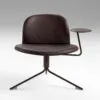
Satellite an easy chair by Richard Hutten – Offecct
Satellite, an easy chair by Richard Hutten Following a brief from Offecct, internationally acclaimed Dutch …

Tool an adjustable side table by Studio Irvine – Offecct
Tool, an adjustable side table by Studio Irvine The idea of an adjustable side table …

Meet a sofa system by Fattorini+Rizzini+Partners – Offecct
Meet, a sofa system by Fattorini+Rizzini+Partners We wanted to create a sofa that gives you …

Kali a chair by Jasper Morrison – Offecct
Kali, a chair by Jasper Morrison Offecct is very pleased to announce its first collaboration …

Soundwave® Wall acoustic panel by Christophe Pillet – Offecct
Soundwave® Wall, acoustic panel by Christophe Pillet Offecct has together with French designer Christophe Pillet …

Archipelago tables by Michael Sodeau – Offecct
Archipelago, tables by Michael Sodeau Wood is a material of infinite possibilities and still one …

Bop Wood chair design by Knudsen Berg Hindenes – Offecct
Bop Wood The chair Bop is developed by Offecct in collaboration with Norwegian design bureau …

Membrane an acoustic object and room divider by David Trubridge – Offecct
Membrane, an acoustic object and room divider by David Trubridge A membrane is a delicate …

Gate, a modular sofa system by Claesson Koivisto Rune for Offecct
Imagine a sofa to spend a few minutes in while waiting for a friend preparing …

Caramel by Claesson Koivisto Rune – Offecct
Claesson Koivisto Rune invite you to enjoy Caramel – a new functional and sculptural side …

Haiku a chair design by Mario Ruiz – Offecct
Haiku, a chair by Mario Ruiz Just like the name of this chair implies, something …

Gate a modular sofa system by Claesson Koivisto Rune – Offecct
Gate, a modular sofa system by Claesson Koivisto Rune Imagine a sofa to spend …

Notes hanging acoustic panel by Luca Nichetto – Offecct
Notes, hanging acoustic panel by Luca Nichetto Notes by Italian designer Luca Nichetto is an …

Expanded Ezy collection design by Christophe Pillet – Offecct
Expanded Ezy collection, sofa, easy chair and chairs by Christophe Pillet In 2014 Christophe Pillet …

Drawing Circles exhibition with designer Richard Hutten – Offecct
Drawing Circles, an exhibition with designer Richard Hutten Offecct and Kvadrat presents Drawing Circles, …

Playwall divider design by Claesson Koivisto Rune – Offecct
Room divider PLAYWALL The room dividing system PLAYWALL is the follow up to the successful …

Blocks design by Christophe Pillet – Offecct
Sofa system BLOCKS by Christophe Pillet Offecct is proud to present the new sofa system …

Cape chair design by Nendo – Offecct
Chair CAPE by Nendo Last year ́s project with Japanese design studio Nendo was an …

Airberg by Jean-Marie Massaud – Offecct
The seating furniture AIRBERG by Jean-Marie Massaud Last year, Offecct together with French designer Jean-Marie …

Ando by Daniel Svahn – Offecct
Room divider PLAYWALL by Daniel Svahn The room dividing system PLAYWALL is the follow up …

Focus Divider design by Tengbom for Offecct
FOCUS DIVIDER in collaboration with Tengbom The typology of the office landscape has been redrawn …
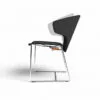
Modena Chair by Claesson Koivisto Rune for Offecct
Offecct Lab is a strategic initiative designed to concentrate Offecct´s efforts in the development of …

Designers Corner 2014 – Oslo
Designers Corner arrangeres av Skøyen Designcenter, Studio Thune, Berg Studio og Canvas. Hver vår inviterer …

Tailor by Louise Hederström – Offecct
Chair TAILOR by Louise Hederström Offecct´s collaboration with Swedish designer Louise Hederström continues with the …

Xtra Large by Claesson Koivisto Rune for Offecct
Table XTRA LARGE by Claesson Koivisto Rune Office spaces and the way we work in …
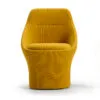
Ezy Chair design by Christophe Pillet for Offecct
Christophe Pillet and Offecct launch the comfortable and timeless collection Ezy. Originally designed for the …

Soundwave® Ando by Daniel Svahn for Offecct
To give one material a new expression with a different meaning and function creates excitement. …
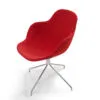
Palma Meeting designed by Khodi Feiz for Offecct
The chair Palma Meeting is designed by Khodi Feiz. Palma Meeting is a development of …

Palma Wood designed by Khodi Feiz for Offecct
Palma Wood The easy chair Palma, designed by Khodi Feiz, is inspired by the cupped palm of a hand, symbolicallycradling the …
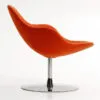
Palma Chair designed by Khodi Feiz for Offecct
Inspired by the cupped palm of a hand, symbolically cradling the body that sits in …

Wheel free standing acoustic by GamFratesi for Offecct
WHEEL is a free standing acoustic object that enables new ways to control sound and …

Swedish Midsummer Design Weekend
Explore the unique collaboration between leading Swedish design producers on a VIP design tour in …

The OFFECCT Prize 2013 – and the nominees are…
Today we participated at the graduation at the KTH School of Architecture at the Royal …

Netframe sofa & easy chair design by Cate & Nelson for Offecct
Sustainable comfort from Cate & Nelson Netframe is a sofa and an easy chair designed …

Islands seating furniture design by Jean-Marie Massaud for Offecct
ISLANDS – Isles of possibilities Islands is a system of seating furniture designed by French …
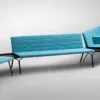
LINEA sofa system design by Luca Nichetto for Offecct
LINEA – Luca Nichetto’s playful lines The original idea to the sofa Linea Luca Nichetto …

Bop an exclusive chair for concert halls and more design Knudsen Berg Hindenes – Offecct
BOP – An exclusive chair for concert halls and more In collaboration with Norwegian design …
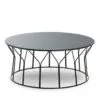
Circus table & planter by the duo Formfjord for Offecct
Circus table Circus table is designed by the duo Formfjord. The main idea when Formfjord …

Carry On – A portable seating solution for activity based working spaces by Mattias Stenberg – Offecct
Carry On – A portable seating solution for activity based working spaces Carry On is …

Soundwave® Pix designed by Jean-Marie Massaud for Offecct
The latest addition to Offecct’s successful selection of sound absorbing panels Soundwave® Pix provides architects …

Good Design Award – Layer by Offecct
Good Design Award 2012: Layer by Läufer + Keichel & Offecct The Chicago Athenaeum Museum …

Offecct Factory Sale 29-30/9
VÄLKOMMEN TILL OFFECCT FACTORY SALE! 29-30 september öppnar vi våra lokaler för en stor utförsäljning! …

Green Divider by Louise Hederström – Offecct
Green Divider is the first result of a new collaboration between Offecct and Swedish designer …

Nobis by Claesson Koivisto Rune – Offecct
NOBIS, a table that was originally created for the new luxury hotel Nobis in Stockholm …

Comfortable chair Duo Wood design by Patrick Norguet – Offecct
Last year Patrick Norguet, one of France’s most interesting contemporary designers, designed the comfortable chair …

Coupe can be described as a chair that has been dressed up in textile by Läufer + Keichel – Offecct
At first glance COUPE gives the impression of being entirely made of textile. In fact …

The easy chair LAYER is characterized by three layers by Läufer + Keichel – Offecct
The easy chair LAYER is characterized by three layers, which can be varied in terms …

Richard Hutten present Soundwave Stripes for Offecct
Offecct and Richard Hutten present SOUNDWAVE STRIPES for unique environments The sound absorbent SOUNDWAVE STRIPES …

FASTBACK design by Claesson Koivisto Rune for Offecct
Offecct and Claesson Koivisto Rune celebrates 15 years of cooperation with two new products and …

Lite Table by Broberg & Ridderstråle for Offecct
Last year Offecct launched the stackable chair LITE, which immediately became a commercial success. LITE …

SMALLROOM – a sofa for plants, activities and spatiality by Ineke Hans for Offecct
Offecct’s earlier collaboration with Dutch designer Ineke Hans resulted in the very successful acoustic panel …

SHELF, PLANTER and SCREEN for silence and greenery by Mario Ruiz for Offecct
SHELF, PLANTER and SCREEN for silence and greenery The Barcelona based designer Mario Ruiz designed …

The easy chair Moment design by Khodi Feiz – Offecct
The easy chair MOMENT is the latest result of the collaboration between the internationally renowned …

OFFECCT launches a new concept called OASIS
OFFECCT launches a new concept called OASIS at the Stockholm Furniture Fair OASIS is an …

New Additions to the Successful Canti Chair by Björn Dahlström and Offecct
Last year OFFECCT had the pleasure to start a cooperation with Swedish designer Björn Dahlström …

Grand Sofa design by Monica Förster for Offecct
The Grand sofa by Monica Förster – free in feeling and invitingly relaxed OFFECCT launches …

Pal Easy Chair design by Claesson Koivisto Rune for Nobis Hotel – Offecct
Pal – Two armchairs in one designed by Claesson Koivisto Rune for Nobis Hotel OFFECCT …
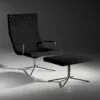
Bond designed by designer Jean-Marie Massaud for Offecct
One of OFFECCT’s most successful product lines is Bond, designed by French designer Jean-Marie Massaud …
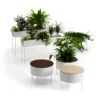
Front Design and Offecct put Pedestal on a Pedestal
OFFECCT initiates a cooperation with the Swedish design group Front by launching Green Pedestals – …
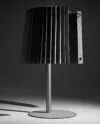
Smalltalk – a Refuge for Conversation and Creativity by CREO Architects
Smalltalk is a unique piece of furniture created by OFFECCT in collaboration with Stefan Sjölander …

Lite – an Attractive Stackable Chair from Offecct by Broberg & Ridderstråle
OFFECCT presents Lite, a new stackable chair / armchair designed by Broberg & Ridderstråle Design …
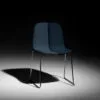
Offecct & Patrick Norguet launches Duo – a space-saving, comfortable chair
OFFECCT and Patrick Norguet launches Duo – a space-saving, comfortable chair for creative freedom The …

Origami – a Sofa for Intimate Conversations and Privacy by Carlos Tiscar for Offecct
In the spring of 2010 OFFECCT launched Origami, a comfortable contemporary version of the classical …
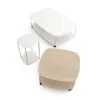
Shelf tables designed by Claesson Koivisto Rune – Offecct
Shelf is a range of tables designed by Claesson Koivisto Rune. Shelf is a modern …

Lite by Broberg & Ridderstråle – Offecct
LITE – an Attractive, Innovative and Rational Stackable Chair from OFFECCT OFFECCT presents LITE, a …
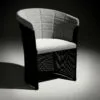
OFFECCT presents new easy chair CLUB by designer Christophe Pillet
Swedish design company OFFECCT presents new easy chair by world-renowned designer Christophe Pillet Swedish design …

Droplet – a rippled table by Ingunn Eikeland Björkelo for Offecct
Droplet – a rippled table by young Norwegian designer Ingunn Eikeland Björkelo OFFECCT is proud …
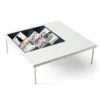
Window Magazine design by Eero Koivisto for Offecct
WINDOW is a table with a tabletop in white lacquered MDF with coloured glass and …
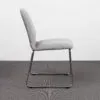
Monica Förster + OFFECCT = design that lasts
Monica Förster + OFFECCT = design that lasts The internationally famous designer Monica Förster is …

Innovative technical textile gives form to FLY design by Patrick Norguet for Offecct
Innovative technical textile gives form to Fly, a new design from OFFECCT and Patrick Norguet …

OFFECCT’s Robo by Luca Nichetto – the design innovation of the year!
OFFECCT’s Robo by Luca Nichetto – the design innovation of the year! Newcomer of the …

Canti Chair design by Björn Dahlström for Offecct
Graphic, lightweight and stackable – Björn Dahlström’s new chair for OFFECCT Created by the well-known …
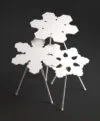
OFFECCT presents a world first in furniture with the Snowflakes table by Claesson Koivisto Rune
It is with great pride that the Swedish design company OFFECCT presents its new table …

Opulence in a Minima format from Claesson Koivisto Rune for Offecct
Opulence in a mini format from Claesson Koivisto Rune in OFFECCT’s Minima seating furniture series …
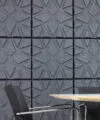
Soundwave Geo by designer Ineke Hans for Offecct
OFFECCT was among the first companies to launch sound-absorbing wall panels With Soundwave Geo by …
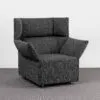
Origami Armchair design by Carlos Tiscar for Offecct
With the launch of Origami, OFFECCT deepens the successful collaboration with Spanish designer Carlos Tiscar …
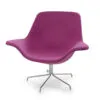
Oyster Easy Chair by Michael Sodeau for Offecct
Michael Sodeau’s designs for OFFECCT: seductive and sensual OFFECCT recently embarked on a long-term collaboration …

News from Offecct @ Stockholm Furniture Fair 2009
Strong architectural presence in Claesson Koivisto Rune’s colorful – Etage coffee table One of the …
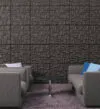
Soundwave Village by Claesson Koivisto Rune for Offecct
Soundwave Village: an architecturally inspired sound absorber and wall panel by Claesson Koivisto Rune The …

The easy chair Spoon designed by Monica Förster for Offecct
The inspiration to the form originally came from Japanese spoons The easy chair Spoon designed …

News from Offecct @ Stockholm Furniture Fair 2008
Eero Koivisto combines poetry with function Eero Koivisto, one of Sweden’s best-known designers, is launching …

Cornflake Collection by Claesson Koivisto Rune for Offecct
Cornflake Barstool, Table, Armchair & Chair by Claesson Koivisto Rune Cornflake Stackable chair Seat in …
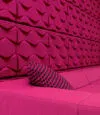
OFFECCT focuses on acoustic design by Karim Rashid, Teppo Asikainen & Marre Moerel
Modern architecture allows space for sound. In contemporary architecture, spaces are often created in hard …

SPLINE – the graphic range of chairs by Norway Says for Offecct
SPLINE – the graphic range of chairs now includes a bar stool and easy chair …

News from Offecct @ Stockholm Furniture Fair 2007
SPORT – the extremely light, mobile little hexagon by Eero Koivisto Eero Koivisto, one of …
News from Offecct @ Salone del Mobile in Milan 2006
SPORT – the little hexagon Design: Eero Koivisto Eero Koivisto, one of the men behind …

News from Offecct – Stockholm Furniture Fair 2005
CELL – pithy design in new organic material Design: Eero Koivisto OFFECCT’s new CELL table …
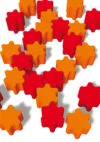
News from Offecct @ Stockholm Furniture Fair 2004
A new FLOWER in the OFFECCT collection OFFECCT is always looking for new ways of …

CLOUD develops to improve meeting places of the future | Monica Förster
Monica Förster has designed the portable inflatable room CLOUD, and has successfully created a unique …

Metro Chair design by Thomas Sandell for Offecct
METRO is Thomas Sandell’s first collaboration with OFFECCT The first collaboration between OFFECCT and Thomas …

Soundwave design by Teppo Asikainen for Offecct
SOUNDWAVE for great looking acoustics in bright new colours Teppo Asikainen is one of the …

News from Offecct @ Stockholm Furniture Fair 2003
International design influences – Offecct continues to build for the future Offecct is linking up …

Pillow design by Matti Klenell – Offecct
PILLOW is an easy chair and recliner designed by Matti Klenell. These are the first …

K-LINE functional furniture design by Khodi Feiz for Offecct
K-LINE functional furniture design Khodi Feiz / Amsterdam, Netherlands Khodi Feiz has designed a range …

Pick Up: Chair, Walking Aid & Storage design by Alfredo Häberli for Offecct
When my son took his first steps and grabbed a stool to help him, I …

News from Offecct @ Stockholm Furniture Fair 2001
Creative meeting places developed with international designers OFFECCT is at the forefront in Sweden in …
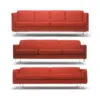
New sofas for OFFECCT, designed by Eero Koivisto
OFFECCT, along with Eero Koivisto, one of Sweden’s most internationally renowned designers, have developed a …

New furniture the meeting places of tomorrow – Offecct
New furniture the meeting places of tomorrow Swedish furniture company OFFECCT interiör is presenting a …

Alfredo Häberli’s new SOLITAIRE for Offecct
Solitaire is an upholstered monomaterial piece It is free-standing and could face in any direction. …

